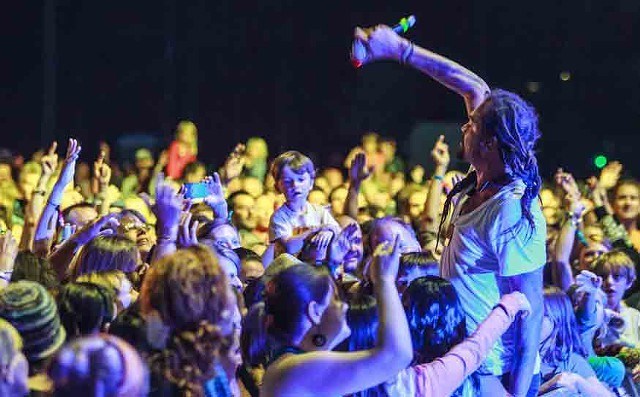The annual announcement of the Festivals, Events and Animation (FE & A) program and its associated budget may not be awaited with bated breath by all of Whistler, but perhaps it should be.
In the report to council earlier this month, research showed that the program has grown summer occupancy from May to October almost every year since 2011.
August occupancy is up 26 per cent from 2011 to 2015. Of course, last year's exceptional weather helped, but there are gains year over year. And the shoulder seasons are seeing significant growth as well.
After the 2010 Olympic and Paralympic Games wrapped up, the question rippling through the resort was, what now? How do we take the experience of the world's biggest sporting event and all the exposure it brought Whistler and leverage it into a strong future?
There were many suggestions, but the resort municipality's idea was to organize animation and festivals to pepper the summer months, so that no matter when visitors came they would always find something entertaining going on. Added to this was the idea of making sure sporting and other events brought participants here, growing the dynamic vibe of outdoor fun and activity for families and others.
It goes without saying that the party-town energy has been embraced as well within many of our summer events, and community partners such as Gibbons and Watermark play an important role in nurturing this segment of travellers.
The success of this lies not just in the planning. It is also due in large part to the funding Whistler gets through the Resort Municipality Initiative, or RMI, as it is commonly called. Started in 2006, the fund is to be used to grow tourism.
Over $87 million has been invested since the RMI's inception helping the 14 resort communities that are part of the collective diversify and strengthen their tourism opportunities and regional economies. Over $60 million has been provided to Whistler alone.
In 2014 and 2015 Whistler got $7.1 million — the lion's share of the total of $10.5 million.
This year Whistler's RMI has gone down to $6.73 million. Interesting that the province would reduce the funding following a record-setting year for tourism in the resort.
Interesting also that the cut would be made to a bright spot in the provincial economy when plans for say, LNG expansion, are looking grim.
For years now, though, Whistler has lived under the threat of the RMI being taken away by the province. Even a quick glance at the numbers makes the idea that the province would scrap the RMI seem foolish. One could make the argument that the resort pays the government back in spades considering that it contributes $1.17 million per day in tax revenues to all levels of government (this is a 2013 statistic and is likely to be higher after 2015).
But it was never meant to be a long-term funding solution.
The program only came into effect after Whistler lobbied hard for several years to get "financial tools" — a recognition of the unique situation tourism-based economies face keeping their product fresh and inventive on the backs of a small taxbase.
This leads to the obvious question of what Whistler is planning to do to replace these funds? This year the RMOW is proposing to spend $3.16 million on FE&A, with programming slated to get $2.641 million. RMI money will also go to the BMX track, the Games Legacy Art project, the wayfinding plan, the Cultural Connector plan ($600,000), trails development, the Spearhead Huts project, a pedestrian bridge across the CN line to access the Train Wreck trail, parks and many, many more significant projects.
In the proposed 2016 budget there is also a line item under projects titled "Long-Term Fiscal Funding Analysis" with a $75,000 budget. Its description: "Research, assessment and scenario analysis of long-term resort finding tools and mechanism (RMI and the Municipal and Regional District Tax etc...). Does that mean it's safe to assume the RMOW is looking at life without the RMI as it is currently crafted.
According to the province's own website on the RMI program, it wants to see: Increased resort activities and amenities; increased visitor activity; increased private investment; increased employment in the community; increased tourism component in the local economy; increased municipal tax revenue and diversification of municipal tax base and revenue.
And the money comes out of a contingency fund so if the provincial economy begins to suffer — due say to LNG not being developed — that money won't be available to resorts.
Last July, the province announced that it would allow all municipalities to increase the MRDT (basically a hotel tax) by one per cent. Whistler hasn't announced yet if it will hike the tax. The 2015 budget for MRDT revenue is $4 million.
That means an extra percentage point could put Whistler's MRDT totals close to $6 million.
But if it increases the tax will that make it easier for the province to cut the RMI?




